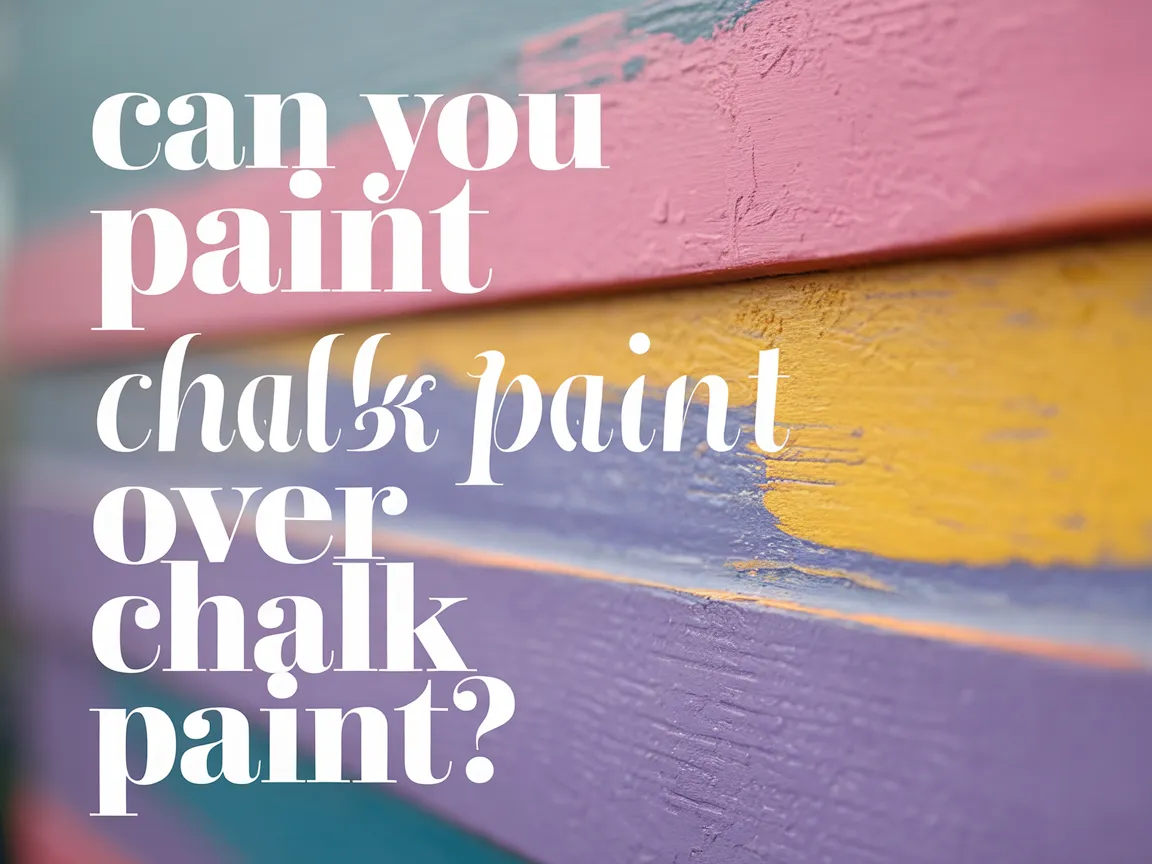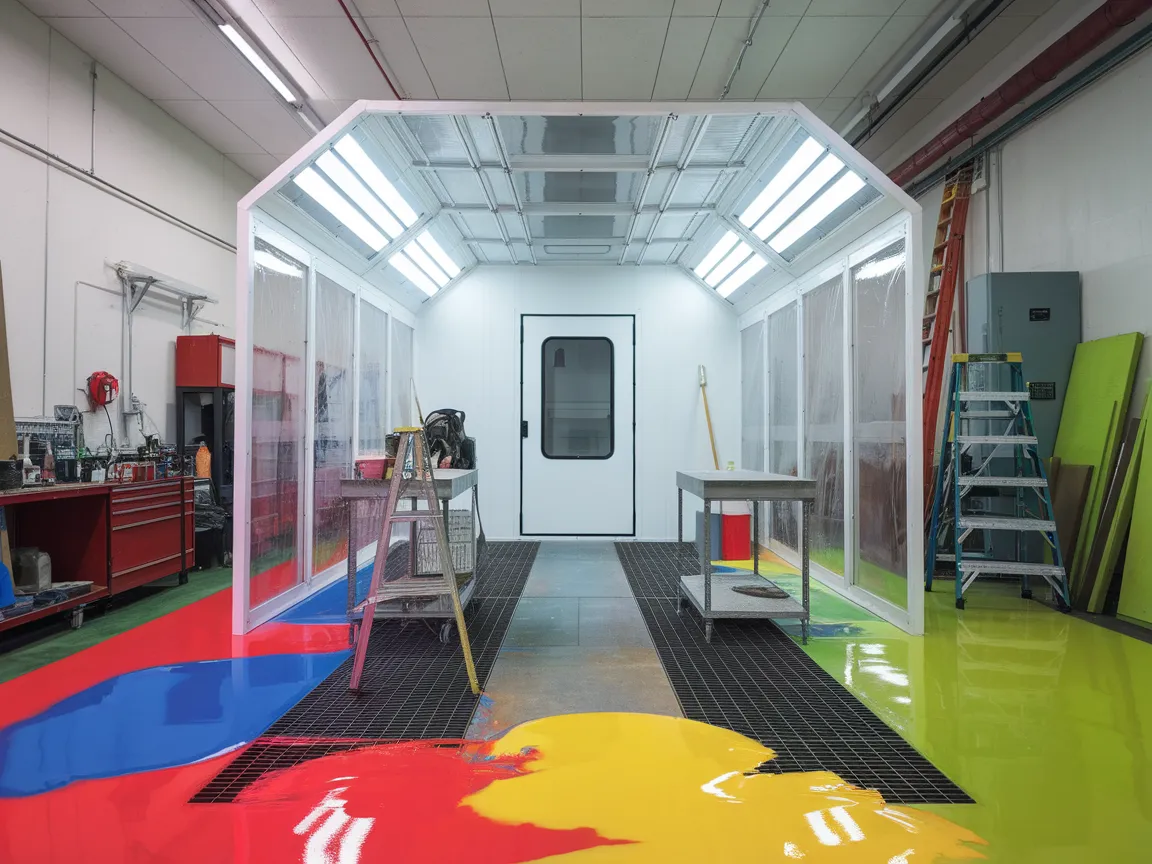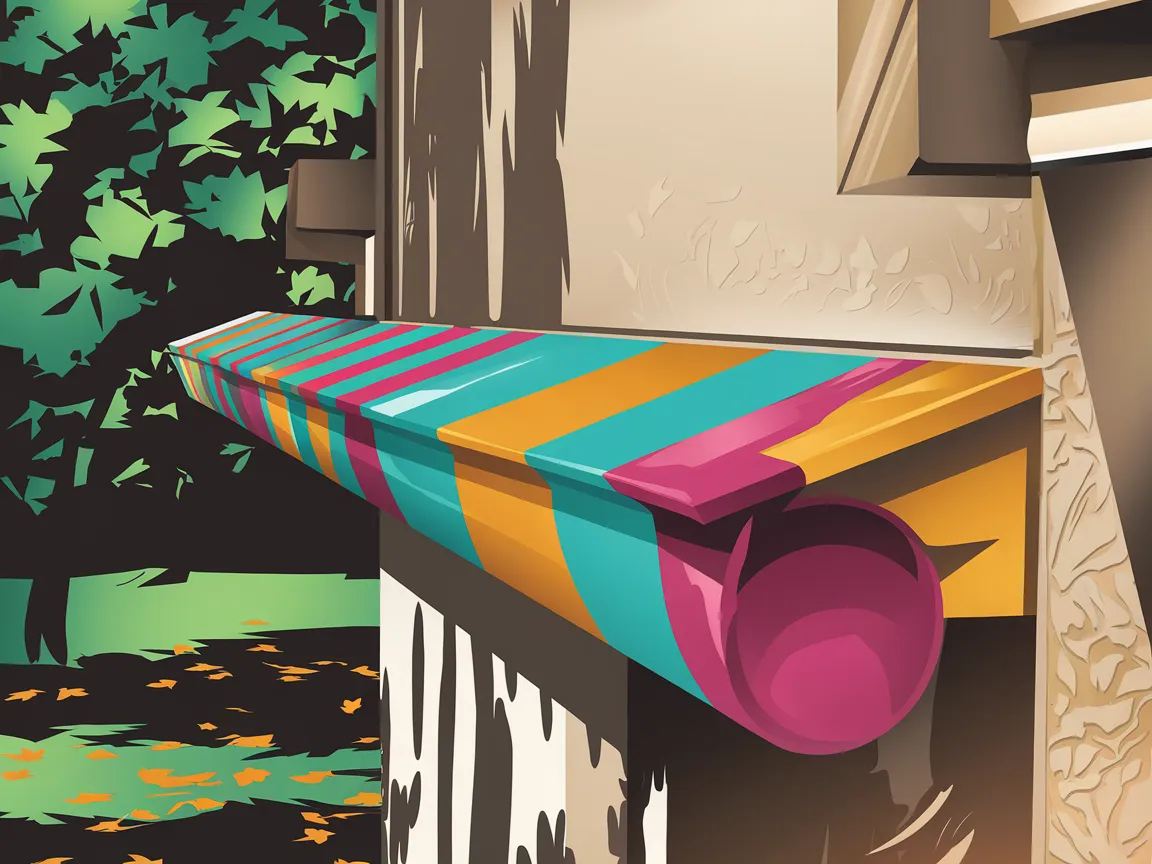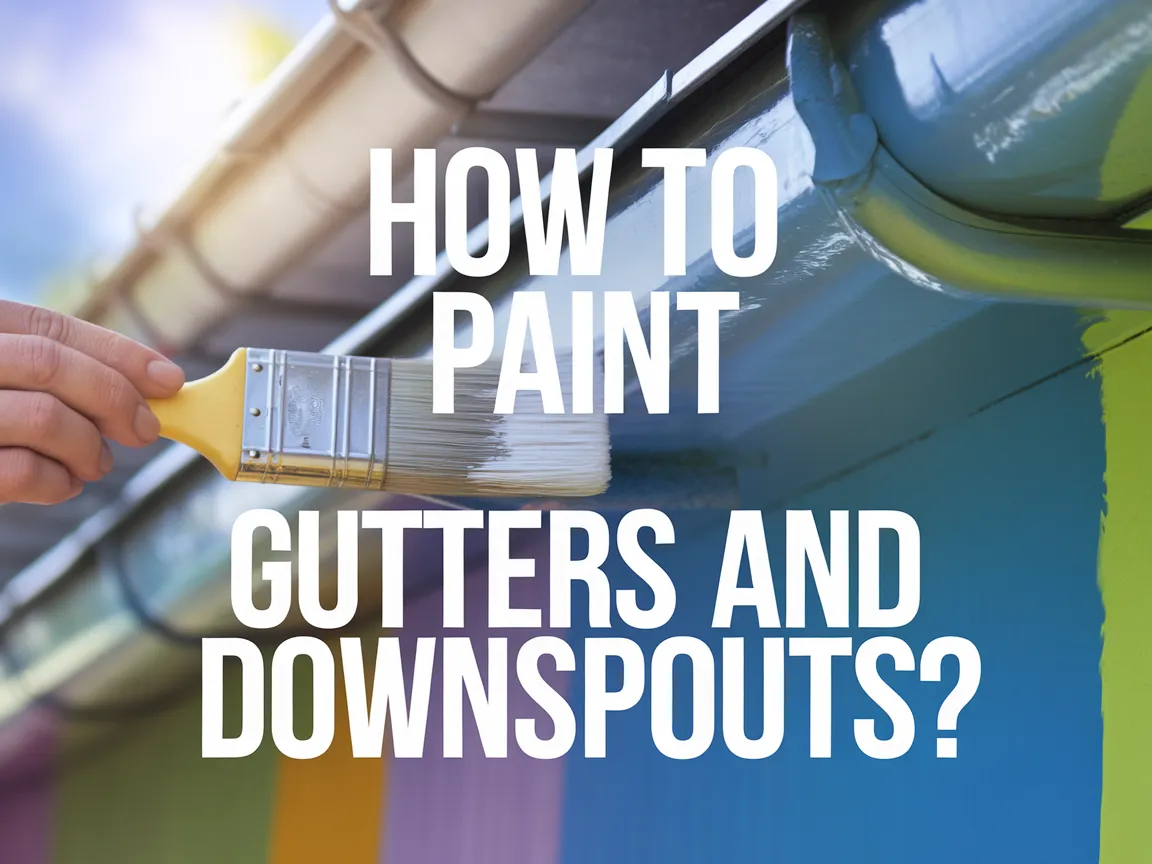Can You Paint Stucco?
Published on: April 9, 2025 | Last Updated: January 7, 2025
Written By: Alisha Winters
Stucco is a textured material often used on walls, made from sand, water, and cement. Think of it like a thick, rough skin on a house, adding character and charm!
So, can you paint stucco? It’s super important to know! I’ve seen gorgeous stucco exterior painting techniques that transform homes, but I’ve also seen disasters. If you don’t prep right, the paint can peel off like a sticker.
In this guide, you’ll learn about key considerations before painting stucco, the steps to paint it successfully, suitable paint types, and how to fix cracks. Plus, we’ll cover creative ideas and answer frequently asked questions, like how often should stucco be painted and what happens if you paint stucco before it cures.
Contents
- 1 Can You Paint Stucco?
- 2 What is Stucco?
- 3 Key Considerations Before You Start Painting Stucco
- 4 Steps to Successfully Paint Stucco
- 5 Types Of Paint Suitable for Stucco
- 6 Factors Affecting the Success Of Painting Stucco
- 7 Common Issues When Painting Stucco
- 8 Finishing Touches to Enhance Your Stucco Project
- 9 Why Texture Matters When Painting Stucco
- 10 Evaluating Stucco Damage Before Painting
- 11 Creative DIY Project Ideas for Painted Stucco
- 12 Maintenance Tips for Painted Stucco
- 13 Comparing Painted vs. Untreated Stucco
- 14 Frequently Asked Questions About Painting Stucco
- 15 Conclusion
- 16 Additional Resources
Can You Paint Stucco?
Yes, you can paint stucco! Just make sure it’s clean, dry, and fully cured—usually about 30 days. Use a breathable exterior paint designed for masonry to prevent peeling. If you want to achieve a vibrant yellow finish, select the perfect yellow tone. Regular maintenance keeps your stucco looking fresh.
The Finishing Touch
A freshly painted wall is a blank canvas. The best way to bring your room to life is with a single piece of statement art that ties everything together.
Browse Wall Art at Big Wall DecorWhat is Stucco?
Stucco is a durable exterior finish made from a mixture of cement, sand, and water. It’s typically applied in layers, about 18 to 25 mm (0.7 To 1 Inch) thick, creating a hard, protective surface for buildings. When considering home maintenance, you might wonder about proper disposal of leftover materials like paint cans used during stucco projects.
You might wonder if you can paint stucco. A friend of mine wanted to refresh his old stucco house, which got me thinking about the best methods and materials for the job.
One friend used it for his home’s exterior and discovered that painting stucco before it cures can cause peeling or bubbling later. If you’re considering this, remember that stucco needs to cure for at least 30 days (720 Hours) before painting, or you’ll face problems. When transforming surfaces like cedar, you might want to explore exterior siding painting techniques.
Key Considerations Before You Start Painting Stucco
What do you need to consider?
- Stucco Primer: Use a high-quality primer like Zinsser Bull’s Eye 1-2-3 for proper adhesion of paint to the stucco surface.
- Exterior Acrylic Paint: Choose a paint such as Behr Premium Plus Ultra Exterior. This paint resists the elements and prevents moisture buildup.
- Wire Brush: Grab a stiff wire brush, like the Lan.zk Heavy Duty Wire Brush, to remove dirt and loose particles, preparing the surface for painting.
- Paint Roller with Extension Pole: Get a 30-cm (12-inch) roller extension, such as the Wooster Jumbo-Koter, to efficiently cover large walls without constant lifting.
- Caulk: You’ll need a durable caulk, such as DAP Dynaflex 230, to seal cracks for a smooth finish on your stucco.
We’ve wrapped up important factors to consider before painting stucco. Let us turn our attention to the steps for successful application.
Also See: How Much Can 5 Gallons Of Paint Cover? Project Tips!
The Finishing Touch
A freshly painted wall is a blank canvas. The best way to bring your room to life is with a single piece of statement art that ties everything together.
Browse Wall Art at Big Wall Decor
Steps to Successfully Paint Stucco
Here are the steps to effectively paint stucco for beautiful results.
-
Preparing the Surface
Start by cleaning the stucco. Use a pressure washer at 2,500 PSI to remove dirt, mildew, and loose paint. Ensure the surface dries before proceeding to the next step.
Check for cracks or damage and fill them with a stucco repair compound. This provides a smooth surface for even paint adhesion.
-
Selecting the Right Paint
Choose paint specifically made for stucco. Acrylic latex paint is best due to its water-resistant and flexible properties, preventing cracks as the stucco expands and contracts.
Opt for a high-quality product with a 10-20% sheen. Higher sheen enhances moisture resistance, while lower sheen offers a more traditional look.
-
Priming the Stucco
Apply a quality primer designed for stucco. This improves paint adhesion and ensures a uniform, vibrant color.
Using a roller designed for textured surfaces helps reach all the crevices.
-
Applying the Paint
Once the primer’s dry, start painting with a roller or sprayer. Apply paint in sections, beginning at the top and working your way down to avoid drips.
For best coverage, apply vertical strokes, then crosshatch with horizontal strokes. Use at least two coats for a longer-lasting finish.
-
Allowing for Proper Drying
Let the paint dry completely between coats, typically 4-6 hours for latex paint, depending on humidity and temperature. This prevents streaks and color inconsistencies.
After the final coat, wait 48-72 hours before exposing the surface to rain or heavy moisture. This ensures a durable, weather-resistant finish for your painted stucco.
So far we covered the process for effectively painting stucco. Let’s look at the different paint types suitable for stucco next.
Types Of Paint Suitable for Stucco
Let’s look at different types of paint for stucco: Acrylic, Elastomeric, Masonry, and Oil-Based paints.
-
Acrylic Paint
Acrylic paint is flexible and durable. It allows stucco to breathe, reducing moisture issues, and generally dries within 1-2 hours.
-
Elastomeric Paint
This type is ideal for old or cracked stucco, providing a thick protective coating. It stretches to accommodate movement, commonly elongating up to 500%, making it suitable for varying weather conditions. If you’re considering refinishing surfaces like cast iron tubs, you might want to explore painting techniques for metal surfaces.
-
Masonry Paint
Masonry paint forms a hard finish and offers excellent adhesion to stucco. It resists stains and moisture, lasting 5-15 years, depending on conditions.
-
Oil-based Paint
Oil-based paint offers high durability and hardness but emits volatile organic compounds (Vocs). It’s more prone to peeling, with drying times of 24 hours or more.
Reflecting on my past experiences, it’s clear that Acrylic paint works wonders on stucco. It’s durable and quick to dry, so there’s less waiting around!
We’ve wrapped up the various types of paint effective for stucco. Let us turn our attention to the factors that influence painting success.
Factors Affecting the Success Of Painting Stucco
What factors impact your ability to effectively paint stucco surfaces?
-
Stucco Curing Time: Painting before the stucco has fully cured can result in poor adhesion.
-
Moisture Levels: High humidity or moisture can prevent paint from sticking, ruining your finish.
-
Surface Preparation: Neglecting crack repairs or cleaning can cause the paint to chip and peel later.
-
Paint Type: Using the wrong paint can lead to color fading and rapid deterioration.
We’ve wrapped up the factors influencing stucco painting success here. Let us turn our attention to common issues encountered when painting stucco.
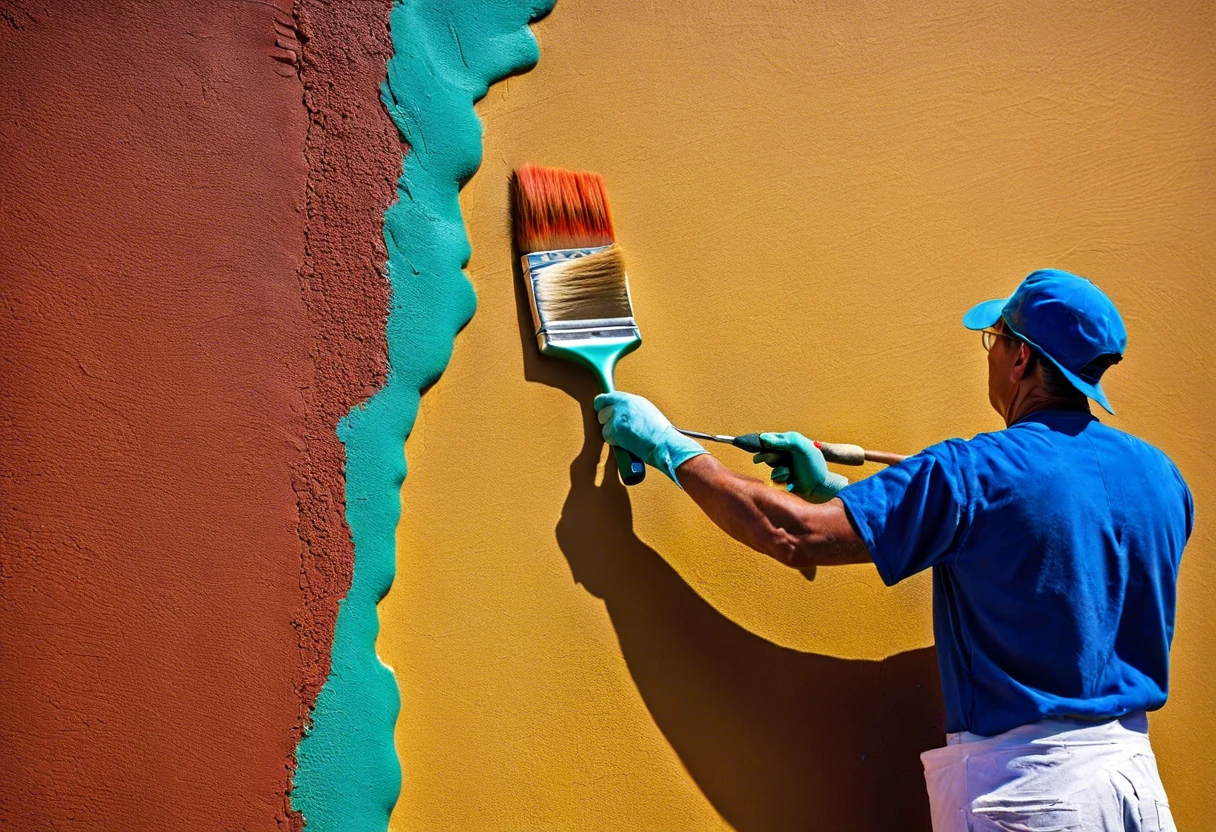
Common Issues When Painting Stucco
My buddy faced serious peeling when he painted stucco too soon. He didn’t wait the recommended 30 days for curing. What a mess!
To fix this, he scraped off the loose paint, applied a primer, and re-sprayed with durable exterior paint. This way, the stucco can breathe, and moisture won’t get trapped!
Finishing Touches to Enhance Your Stucco Project
After you paint your stucco, keep it clean. Use a gentle pressure washer (1,500-2,000 Psi) once a year to remove dirt and grime.
Inspect your stucco every 6 months. Look for cracks larger than 1/16 inch (1.6 Mm) and areas where the paint is peeling. Use products like QUIKRETE for repairs.
I recommend applying a clear sealant every 3 years for extra moisture resistance. It adds durability and longevity, which is ideal for experienced painters.
The Finishing Touch
A freshly painted wall is a blank canvas. The best way to bring your room to life is with a single piece of statement art that ties everything together.
Browse Wall Art at Big Wall DecorWhy Texture Matters When Painting Stucco
Texture plays a huge role in the look and longevity of your painted stucco.
- Types of Textures:
- Flat: Smooth appearance that’s easier to paint but may not hold the paint as well.
- Sand Finish: Rough, provides great adhesion but may require more paint for coverage.
- Cat Face: Looks like grooves. Paint can settle in, so watch for drips!
- Importance of Texture: A textured surface offers better paint adhesion than a flat one. The more irregularities, the more the paint can grip.
- Long-Term Effects: The texture can affect maintenance. More pronounced textures may trap dirt, needing more frequent cleaning.
Evaluating Stucco Damage Before Painting
Knowing how to evaluate stucco damage ensures a smooth painting process.
- Surface Cracks:
- Less than 6 mm (0.25 in): Use a quality filler. Smooth it out for even painting.
- More than 6 mm (0.25 in): Repair with a mesh for added strength. Check for deeper structural issues.
- Water Damage: Look for discoloration or peeling paint. This shows moisture problems. Repair with moisture-resistant products to prevent recurrence.
- Mildew and Mold: If you find mold, clean it with a bleach solution (1 cup bleach to 1 gallon of water) before painting to maintain a healthy surface.
Creative DIY Project Ideas for Painted Stucco
Ever think about turning your stucco wall into a celestial wonder? Imagine painting a giant galaxy with swirling blues and purples—it’ll be a cosmic showpiece in your yard!
To dive into this project, grab some outdoor paint, a few brushes, and a ladder. You’ll spend around $50-$100 and a weekend or two to really let your creativity shine.
If you’re not up for a mural, why not add texture? Mix sand into your paint for a beachy feel or use a stencil for unique patterns. I’ve tried this before and it gives a fun, artistic twist that anyone walking by will admire! When considering painting surfaces like bathroom fixtures, you might want to explore specific techniques for painting bathroom sink surfaces.
Maintenance Tips for Painted Stucco
Keeping your painted stucco in top shape is crucial for its longevity.
-
Regular Cleaning
Wash the stucco annually using a gentle pressure washer at 1,500-2,000 PSI. This helps remove dirt and prevent mold growth.
-
Inspect for Damage
Every six months, check for any cracks or peeling. Use a putty knife to test if the paint is still bonded well.
-
Repaint When Needed
Repaint every 5-7 years or when you see significant wear. This keeps the color fresh and protects your stucco.
Comparing Painted vs. Untreated Stucco
Wondering how painting affects your stucco? Let’s break it down.
| Aspect | Painted Stucco | Untreated Stucco |
|---|---|---|
| Moisture Resistance | High, with proper paint | Low; absorbs moisture easily |
| Longevity | 5-10 years with a good coat | Depends on exposure; less predictable |
| Maintenance | Less frequent, easier upkeep | More frequent checks needed |
| Visual Appeal | Vibrant colors, customizable finishes | Natural look; may fade over time |
Frequently Asked Questions About Painting Stucco
Can I Paint Over Existing Paint on Stucco?
Yes, you can paint over existing paint on stucco. Make sure the old paint is in good condition to ensure adhesion, otherwise, it may peel. Research shows that just cleaning the surface can save you about $100 in prep time per 100 m² (1,076 Ft²).
What Type Of Paint is Best for Stucco Surfaces?
To get the best results, use a paint specifically designed for stucco surfaces. Acrylic or elastomeric paints work well as they allow moisture to escape while providing durability, lasting anywhere from 5 to 10 years. If you’re unsure about the painting process, you might want to check your caulking preparation techniques.
How Often Should Stucco Be Repainted?
Stucco should typically be repainted every 5 to 7 years. Factors like weather, location, and paint type can impact this timeline, but keeping an eye on wear and tear is crucial for maintenance. When you notice imperfections or fading, you might want to explore professional touch-up painting techniques to restore your stucco’s appearance.
Will Painting Stucco Trap Moisture?
No, painting stucco properly won’t trap moisture. Using breathable paints allows moisture to escape while protecting the surface, helping prevent damage from within.
How Long Should Stucco Cure Before Painting?
Stucco should cure for at least 28 days before painting. This duration lets it dry and solidify completely, ensuring better adherence and overall finish quality.
How to Fix Cracks in Stucco Before Painting?
To fix cracks in stucco before painting, clean out the cracks and use a high-quality stucco patch. For cracks wider than 6 mm (0.25 In), consider a reinforcing mesh for added strength.
What Happens if You Paint Stucco Before It Cures?
If you paint stucco before it cures, you’ll lock in moisture, which may cause peeling or bubbling later. Aim for the full 28-day cure to avoid future issues.
Also See: Can You Use Interior Paint Outside? Know the Risks!
Conclusion
We’ve covered a lot, including what stucco is, key considerations before painting, steps for successful painting, recommended color palettes, suitable paint types, factors affecting success, common issues faced, finishing touches, and creative DIY ideas.
So, can you paint stucco? Yes, with the right preparation, after 7 to 14 days of curing time, and by addressing cracks, you’ll achieve a vibrant and lasting finish.
For further insights and expert tips, visit our homepage at Paint Answers.
Additional Resources
- Loomis, A. (2011). Figure Drawing for All It’s Worth. New York, NY: Titan Books.
- What You Should Know Before You Paint Stucco | Chicago Painters
- Can You Paint Stucco? How To Paint Stucco & Best Stucco Colors – PaintRite Pros
- How to Paint Stucco | Benjamin Moore
Experienced interior designer with 15+ years in transforming spaces, blending artistry with expertise in color and design. Rhode Island School of Design graduate, specializing in restorations and modern makeovers.
Exterior, Siding






